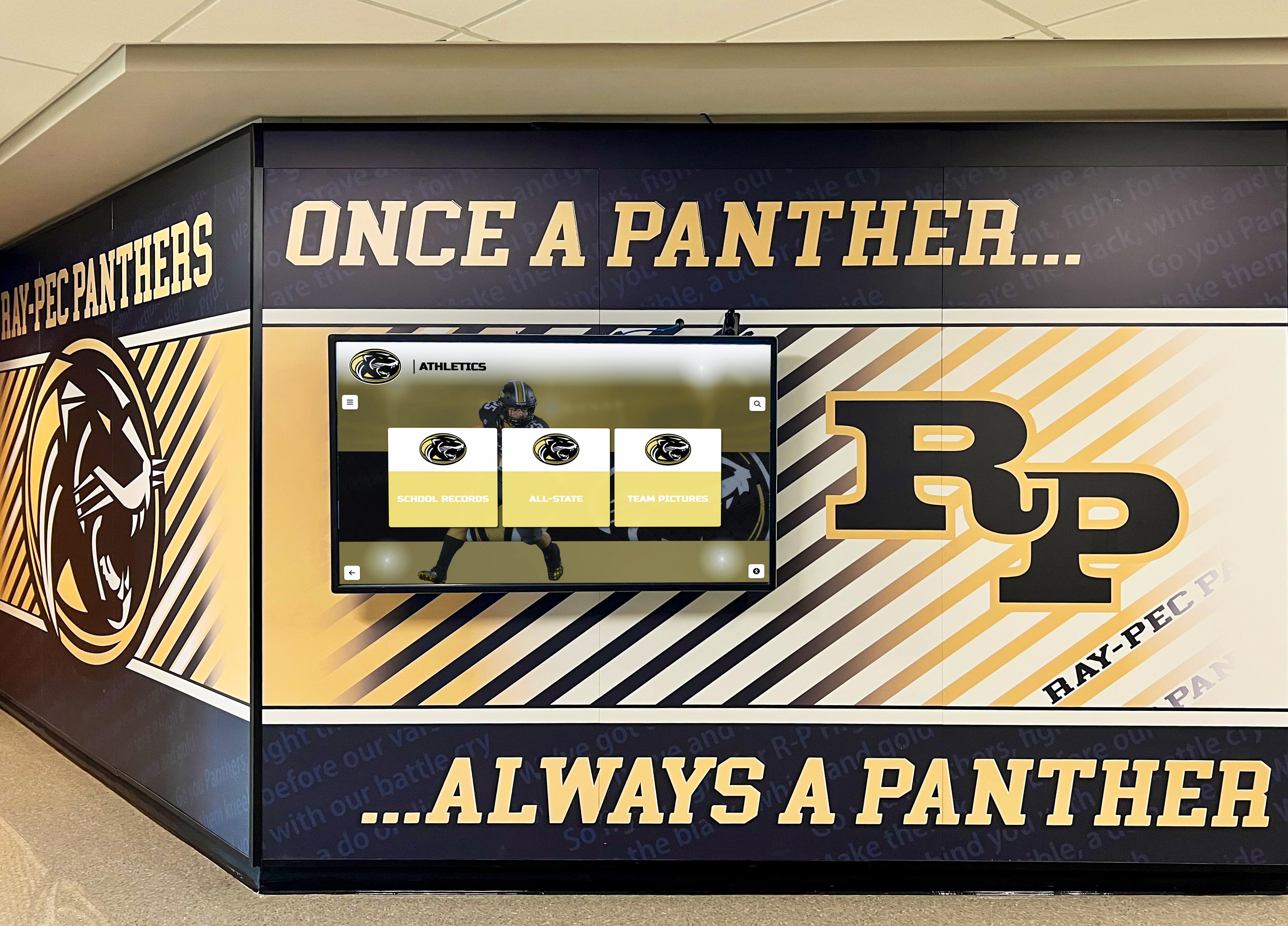Key Takeaways
Discover the 8 best digital hall of fame software solutions for schools in 2026. Compare features, pricing, and capabilities to find the perfect platform for your school's recognition needs.
Why Schools Are Embracing Digital Hall of Fame Software in 2026
Traditional recognition methods face limitations that become more apparent every year. Physical trophy cases run out of space, requiring difficult decisions about which achievements to display and which to store away. Static plaques provide minimal context about honored individuals, reducing complex achievements to names and dates. Updating physical displays requires fabrication, installation, and significant expense for every change.
Digital hall of fame software eliminates these constraints while creating richer, more engaging recognition experiences. Schools implementing these systems report increased student pride, stronger alumni connections, enhanced recruiting appeal, and more inclusive recognition that celebrates diverse forms of excellence across academics, athletics, arts, service, and leadership.
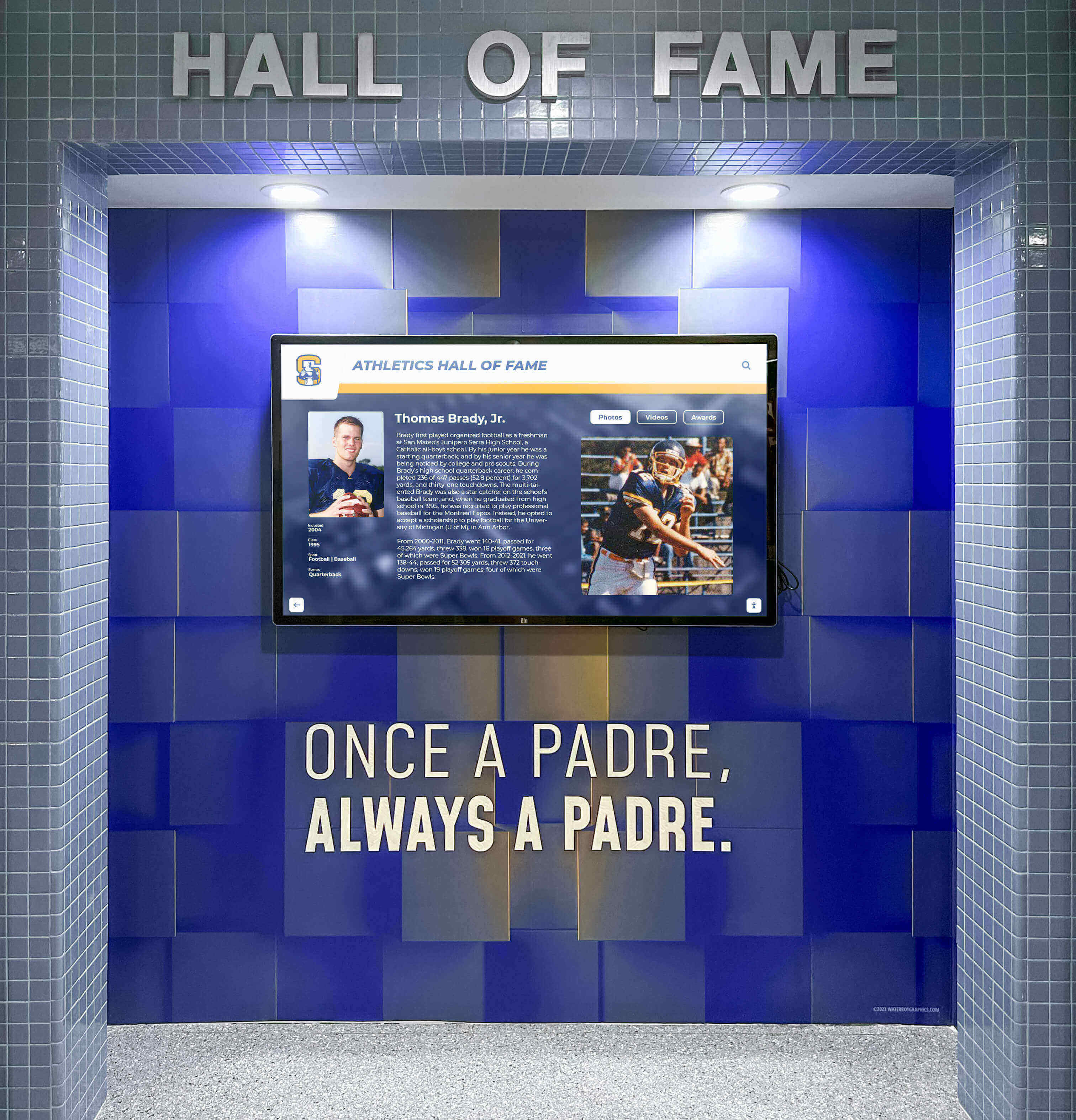
The best digital hall of fame software combines several critical capabilities:
- Unlimited capacity for recognizing achievements without physical space constraints
- Rich multimedia storytelling through photos, videos, statistics, and biographical narratives
- Easy content management enabling staff to update recognition instantly without technical expertise
- Interactive exploration through touchscreens allowing visitors to search, filter, and discover achievements
- Web accessibility extending recognition beyond physical locations to reach global audiences
- Sustainable operation with lower long-term costs than continuously expanding physical displays
As we examine the eight best solutions for schools in 2026, consider which capabilities matter most for your institution’s specific recognition goals and how each platform addresses your unique requirements.
Essential Features for School Hall of Fame Software
Before diving into specific platforms, understanding key feature categories helps evaluate which solutions truly meet educational institutions’ needs:
Content Management
Intuitive interfaces enabling non-technical staff to add profiles, upload media, and organize content by sport, year, achievement type, or custom categories
Interactive Display
Touchscreen compatibility with responsive interfaces optimized for exploration in lobbies, athletic facilities, and high-traffic areas
Multi-Platform Access
Seamless operation across physical displays, web browsers, tablets, and smartphones ensuring recognition reaches all audiences
Customization Options
Branding control, template flexibility, and design that authentically reflects your school's identity and traditions
Analytics & Reporting
Usage insights revealing which content engages visitors, informing recognition strategy optimization
Support & Training
Responsive assistance, comprehensive documentation, and staff training ensuring confident system operation
The 8 Best Digital Hall of Fame Software Solutions for Schools
1. Rocket Alumni Solutions – Best Comprehensive Platform for Schools
Best For: K-12 schools, colleges, universities, athletic departments, and multi-campus districts seeking turnkey recognition solutions
Rocket Alumni Solutions leads the school recognition market with purpose-built software specifically designed for educational institutions. Unlike generic digital signage or adapted website platforms, Rocket provides comprehensive systems that power both physical touchscreen displays and web-accessible halls of fame from a unified content management platform.
Why Rocket Ranks #1:
Rocket’s specialized focus on educational recognition delivers capabilities that generic platforms cannot match. The company has deployed over 1,000 installations across schools nationwide, demonstrating proven reliability and deep understanding of how educational institutions operate. Athletic directors, principals, and alumni coordinators consistently praise Rocket’s intuitive interface that enables updates within minutes rather than requiring technical expertise or vendor dependencies.
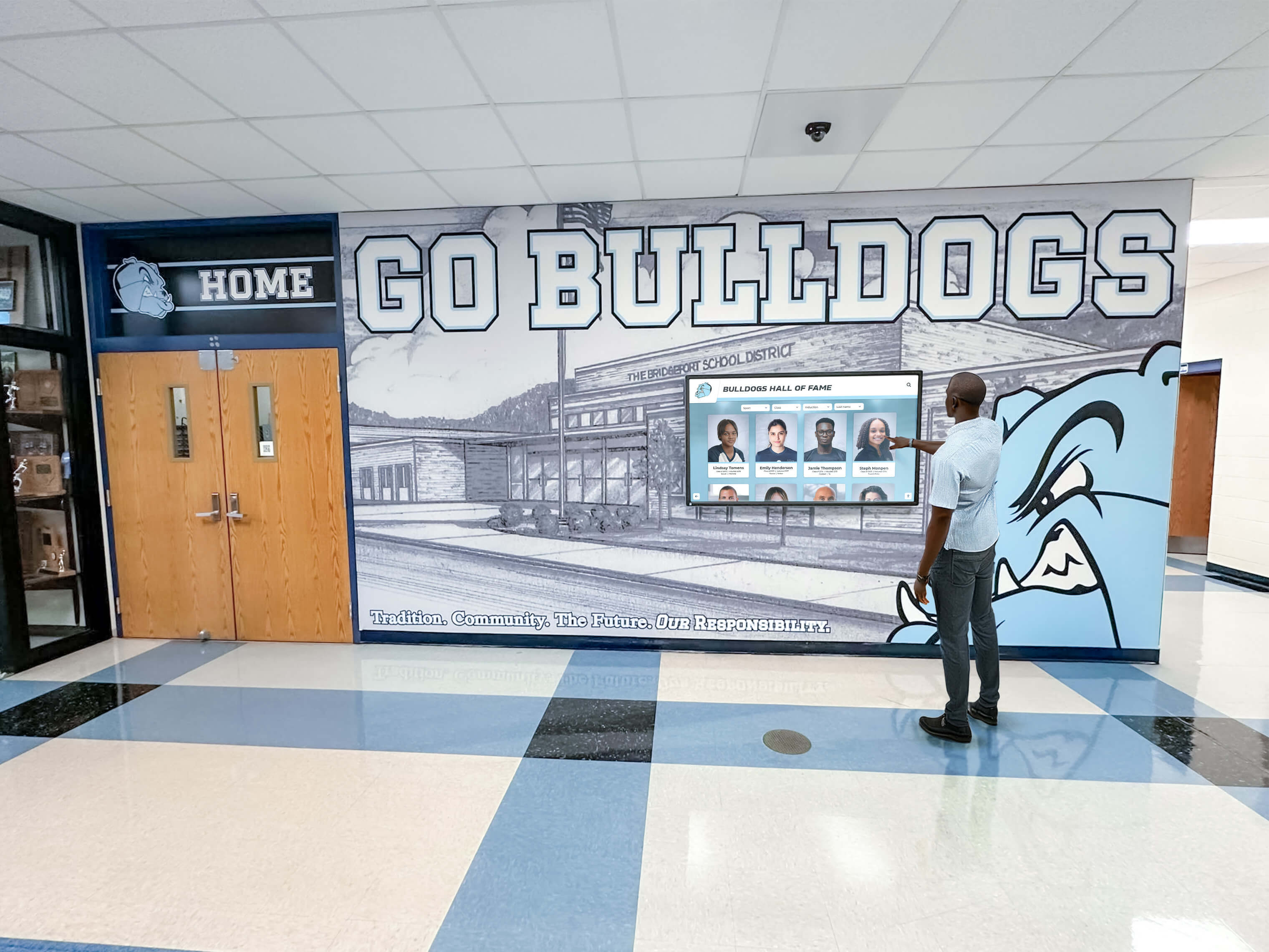
Key Strengths:
- Dual-Mode Recognition: Single platform powers physical touchscreen kiosks and web-accessible online halls of fame simultaneously
- Cloud-Based Management: Update content from anywhere through intuitive web dashboard requiring no technical training
- Unlimited Recognition Capacity: No artificial limits on profiles, achievements, photos, or multimedia content
- School-Specific Templates: Pre-built designs for athletics, academics, performing arts, student accomplishments, and alumni recognition
- Rich Multimedia Integration: Seamlessly incorporate high-resolution photos, video highlights, achievement statistics, and biographical stories
- Advanced Search & Filtering: Sophisticated discovery tools enabling visitors to find athletes by sport, year, achievement, or record category
- Mobile-Responsive Design: Perfect display across all devices from smartphones to large-format touchscreens
- Professional Installation Support: End-to-end assistance from planning through launch and ongoing operation
- Content Migration Services: Expert help digitizing historical achievements, photos, and records
- Proven Reliability: Commercial-grade hardware and 99%+ uptime supporting mission-critical recognition
Implementation Approach:
Rocket provides comprehensive support throughout implementation. Their team assists with recognition strategy, content organization, profile development, hardware selection for physical displays, and staff training. The template-based approach accelerates deployment while allowing extensive customization to match school branding and traditions.
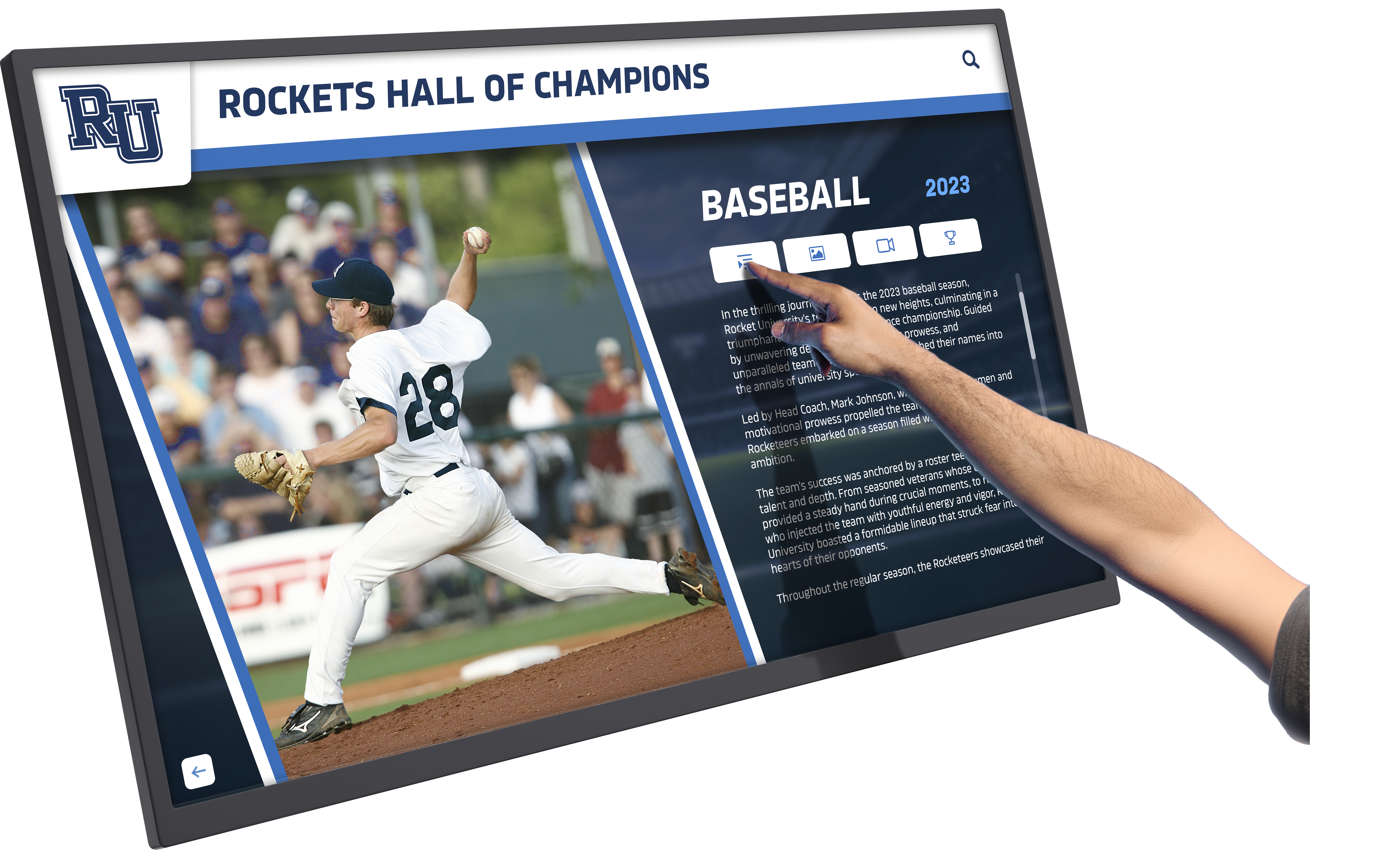
Pricing Structure:
Custom quotes based on school size, number of displays, and feature requirements. Investment typically includes software platform access, optional hardware for physical touchscreen displays, implementation support, content migration assistance, staff training, and ongoing maintenance. Schools report strong return on investment through eliminated plaque fabrication costs, increased alumni engagement, and enhanced program pride.
Ideal For:
Schools prioritizing comprehensive solutions with dedicated support and proven technology. Institutions seeking to combine physical displays with web accessibility through unified platforms. Athletic departments managing extensive historical records across multiple sports. Districts coordinating recognition across multiple campuses from centralized management systems.
Limitations:
Higher initial investment than DIY website approaches. Requires commitment to professional recognition programs rather than minimal basic lists. Schools with severely limited budgets might start with simpler platforms and migrate to Rocket as programs mature.
Learn more about digital hall of fame software integration with existing school systems.
2. Rise Vision – Best for Schools Already Using Digital Signage
Best For: Schools with existing digital signage infrastructure seeking to incorporate recognition content alongside announcements and communications
Rise Vision provides cloud-based digital signage software that schools can adapt for hall of fame purposes when recognition represents one component of broader digital communication strategies.
Key Strengths:
- Multi-Purpose Platform: Single system manages recognition content, daily announcements, emergency alerts, and promotional displays
- Template Library: Pre-built designs for various content types including recognition slideshow formats
- Cloud-Based Updates: Change content remotely without physical access to displays
- Scheduling Capabilities: Rotate recognition content with other school communications on shared displays
- Cost-Effective for Multiple Uses: Justify investment across numerous digital signage applications beyond halls of fame
Recognition-Specific Limitations:
- Limited Database Functionality: Designed for rotating content rather than searchable achievement archives
- Minimal Interactivity: Not optimized for touchscreen exploration and deep content discovery
- Generic Templates: Recognition designs not specifically tailored to hall of fame requirements
- Shallow Profile Depth: Slideshow format constrains biographical storytelling compared to dedicated platforms
- No Advanced Search: Visitors cannot easily find specific athletes or filter by achievement categories
Pricing:
Subscription-based pricing starting around $10-25 per display monthly. Total investment depends on number of screens and feature requirements.
Best Use Case:
Schools already committed to Rise Vision for campus-wide digital signage who want to incorporate recognition slideshow content on existing displays. Works well for rotating athlete highlights and championship celebrations but less effectively for comprehensive, searchable halls of fame.
Better Alternative:
For schools prioritizing recognition programs, dedicated platforms like Rocket Alumni Solutions deliver dramatically superior hall of fame experiences. Consider Rise Vision when recognition is secondary to broader signage needs.
3. WordPress with Custom Development – Best for Schools with Web Development Resources
Best For: Schools with dedicated IT departments, web development expertise, and desire for complete customization control
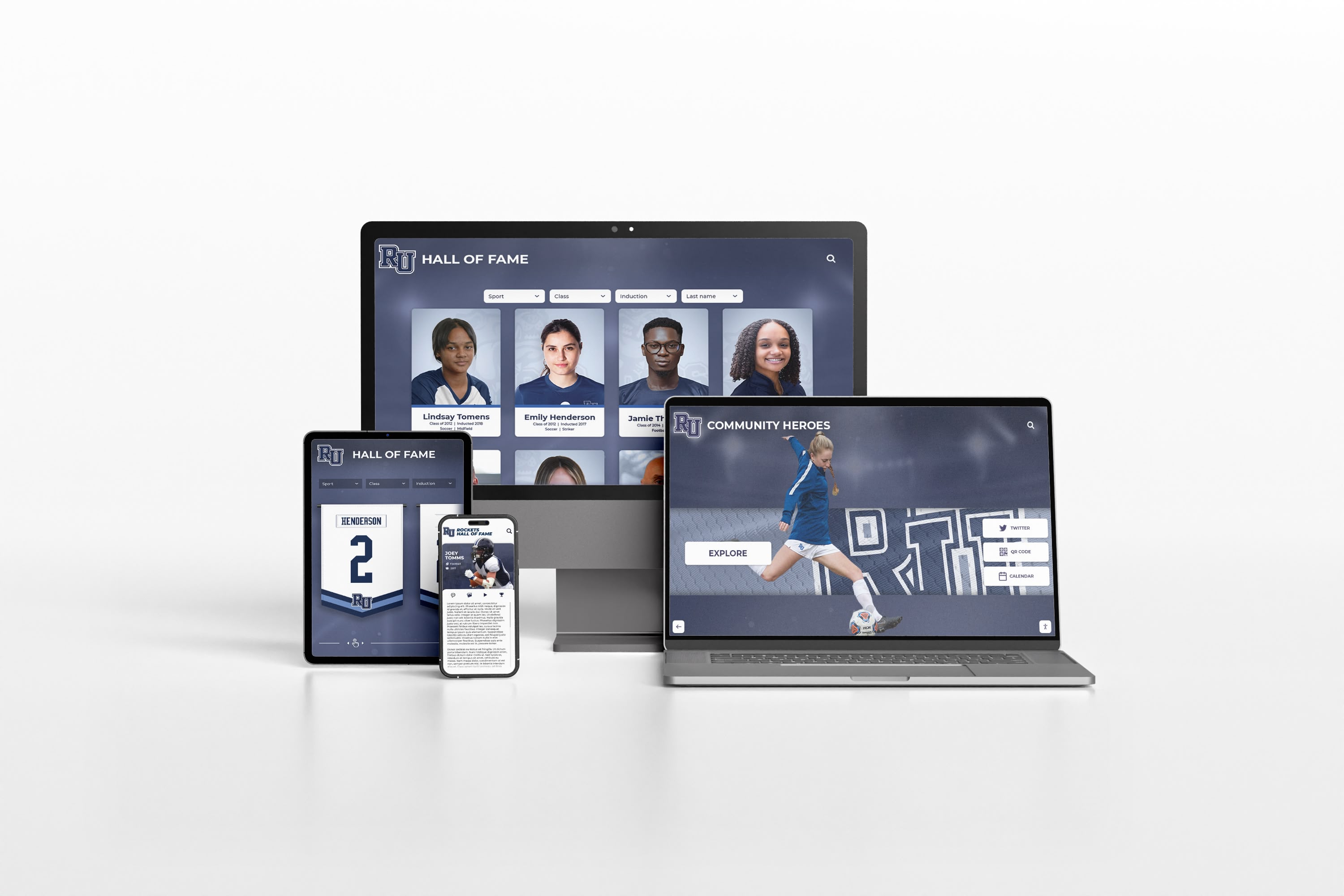
WordPress, as the world’s most popular content management system, offers unlimited customization potential for schools willing to invest in custom development work.
Key Strengths:
- Complete Design Freedom: Build exactly what you envision without template constraints
- Extensive Plugin Ecosystem: Thousands of plugins extending functionality for forms, galleries, search, and media management
- Full Data Ownership: Complete control over hosting, database, and long-term platform evolution
- SEO Excellence: Powerful search engine optimization capabilities driving organic discovery
- Flexible Integration: Connect with existing school systems, databases, and authentication platforms
Significant Challenges:
- Development Expertise Required: Creating effective hall of fame functionality requires substantial web development skills
- Extended Timeline: Custom development typically takes 3-6 months from planning through launch
- Ongoing Maintenance Burden: Security updates, plugin compatibility, and troubleshooting require continued technical expertise
- No Recognition-Specific Features: All hall of fame functionality must be custom-built or adapted from generic plugins
- Variable Quality: Results depend entirely on developer skill and available budget
- Limited Touchscreen Optimization: Most WordPress themes not designed for interactive kiosk environments
Development Investment:
- Initial Custom Development: $10,000-$50,000 depending on complexity and feature requirements
- Hosting Infrastructure: $500-$2,000 annually for robust hosting supporting multimedia content
- Ongoing Maintenance: $3,000-$10,000 annually for updates, security, and technical support
- Content Migration: Additional costs for converting historical records into digital formats
Best Use Case:
Large school districts with dedicated web development teams who can build and maintain sophisticated custom platforms. Schools needing to integrate recognition tightly with complex existing systems that off-the-shelf platforms cannot accommodate.
Reality Check:
Most schools discover that custom WordPress development costs 2-3x more and takes 3-5x longer than purpose-built solutions like Rocket Alumni Solutions while delivering comparable or inferior results. The flexibility advantage matters only when requirements truly exceed specialized platform capabilities.
4. Gipper – Best for Quick Social Media Graphics and Recognition Content
Best For: Schools wanting to create professional recognition graphics for social media sharing and basic display purposes
Gipper provides template-based graphic design tools specifically tailored for schools, enabling non-designers to create professional sports graphics, recognition announcements, and promotional content.
Key Strengths:
- School-Specific Templates: Pre-designed graphics for athlete recognition, game schedules, championship announcements, and promotional content
- Easy Customization: Simple interfaces allowing quick updates to templates with school branding
- Fast Content Creation: Produce professional graphics in minutes rather than hours
- Social Media Optimization: Designs formatted for Facebook, Instagram, Twitter, and other platforms
- Lower Cost: More affordable than hiring graphic designers for every recognition announcement
Limitations for Comprehensive Halls of Fame:
- Not a Database Platform: Designed for creating individual graphics, not managing searchable achievement archives
- No Interactive Capability: Cannot power touchscreen displays or explorable recognition systems
- Limited to Static Images: Produces graphics rather than dynamic, multimedia recognition experiences
- No Web Portal: Doesn’t create online halls of fame where visitors browse complete achievement histories
- Single-Purpose Tool: Solves graphic design needs but not comprehensive recognition program requirements
Pricing:
Subscription-based with plans typically ranging from $99-$299 monthly depending on features and user access.
Best Use Case:
Schools wanting professional graphics for announcing new hall of fame inductees on social media or creating recognition display content for digital signage. Best used as supplementary tool alongside comprehensive hall of fame platforms rather than primary recognition solution.
Gipper excels at what it does—creating compelling graphics quickly—but schools seeking interactive, searchable halls of fame need platforms specifically designed for that purpose.
5. Canva with Custom Pages – Best Budget Option for Simple Recognition Needs
Best For: Small schools with extremely limited budgets needing basic recognition display options
Canva’s design platform, while not purpose-built for halls of fame, can create simple recognition displays and printable materials for schools with minimal budget.
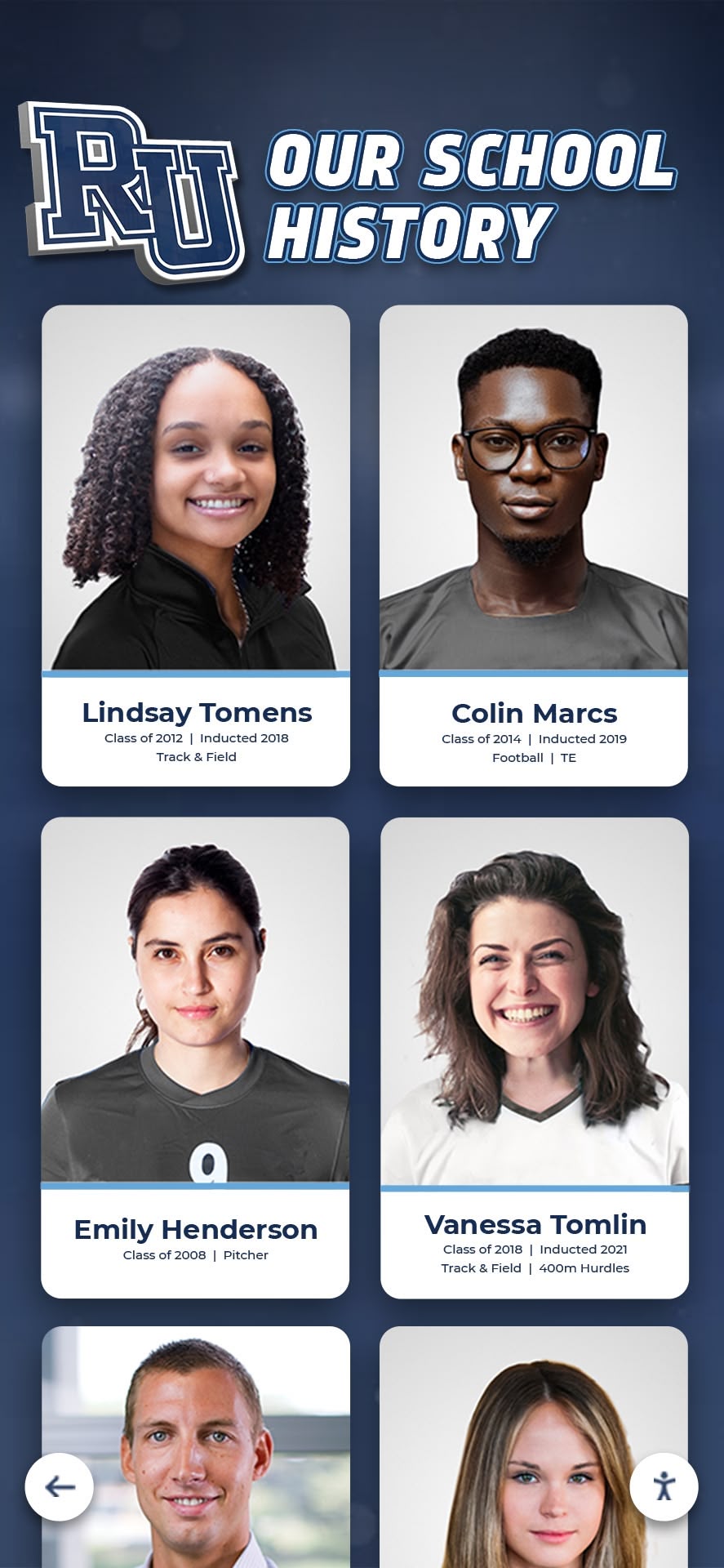
Feasible Applications:
- Printable Recognition Posters: Design and print individual athlete or achievement posters
- Slideshow Presentations: Create image slideshows for display on existing screens
- Social Media Graphics: Generate recognition announcements for digital channels
- Simple Web Pages: Publish basic image-based recognition pages
Significant Limitations:
- No Database Functionality: Cannot create searchable, organized achievement archives
- No Interactive Features: No touchscreen capabilities or discovery tools
- Manual Updates: Every change requires re-designing graphics and re-publishing
- Minimal Multimedia: Limited video integration and dynamic content capabilities
- Generic Design: Not optimized for educational recognition requirements
- No Analytics: Cannot track engagement or measure recognition impact
Pricing:
Free basic version or Canva Pro at approximately $120 annually for enhanced features.
Reality Check:
While Canva works for creating occasional recognition graphics, it fundamentally lacks the database, interactivity, and content management capabilities that effective digital halls of fame require. Schools quickly outgrow this approach as recognition programs expand beyond basic lists.
For only modestly higher investment, purpose-built solutions like Rocket Alumni Solutions provide dramatically superior functionality, professional presentation, and long-term scalability. Canva serves best as supplementary tool for graphics creation rather than primary hall of fame platform.
6. Google Sites – Best for Free Basic Recognition Websites
Best For: Schools with zero budget needing temporary recognition pages or simple honor roll listings
Google Sites provides free website creation tools that schools can use for basic recognition pages when budget absolutely prevents other options.
What Google Sites Can Accomplish:
- Simple Recognition Pages: Create basic web pages listing honoree names and achievements
- Photo Galleries: Display achievement photos in simple grid layouts
- Embedded Content: Include YouTube videos and Google Drive documents
- Easy Collaboration: Multiple staff members can edit content with Google account access
- Zero Software Cost: Completely free for schools with Google Workspace accounts
Substantial Limitations:
- Extremely Basic Functionality: Very limited design and organizational capabilities
- No Search or Filtering: Visitors cannot easily find specific honorees in longer lists
- Generic Appearance: Limited customization options resulting in unprofessional look
- No Touchscreen Optimization: Not designed for interactive kiosk applications
- Poor Scalability: Performance and usability degrade significantly with extensive content
- Limited Multimedia: Basic image and video support without sophisticated integration
Best Use Case:
Creating simple honor roll pages or temporary recognition listings when absolutely no budget exists. Maintaining lists of achievements until the school can invest in proper hall of fame software.
Honest Assessment:
Google Sites works for basic lists but lacks virtually every feature that makes digital halls of fame engaging and effective. Schools should view this as temporary solution until budgets allow migration to professional platforms. The minimal investment required for purpose-built recognition software delivers exponentially better results than free but severely limited tools.
Explore more sophisticated virtual hall of fame platforms when ready to upgrade.
7. Custom Database Application Development – Best for Unique Enterprise Requirements
Best For: Large university systems, major athletic programs, or school districts with highly specialized requirements and substantial technology budgets
Organizations with truly unique requirements sometimes commission entirely custom database applications specifically designed for their recognition programs.
When Custom Development Makes Sense:
- Massive Scale: Recognition programs managing tens of thousands of profiles requiring specialized database architecture
- Complex Integration: Deep connections with existing student information systems, advancement databases, or authentication platforms
- Unique Functionality: Features that genuinely cannot be accomplished with existing purpose-built platforms
- Proprietary Requirements: Specialized compliance, security, or operational needs unique to the institution
- Strategic Priority: Recognition platform represents core institutional priority justifying major investment
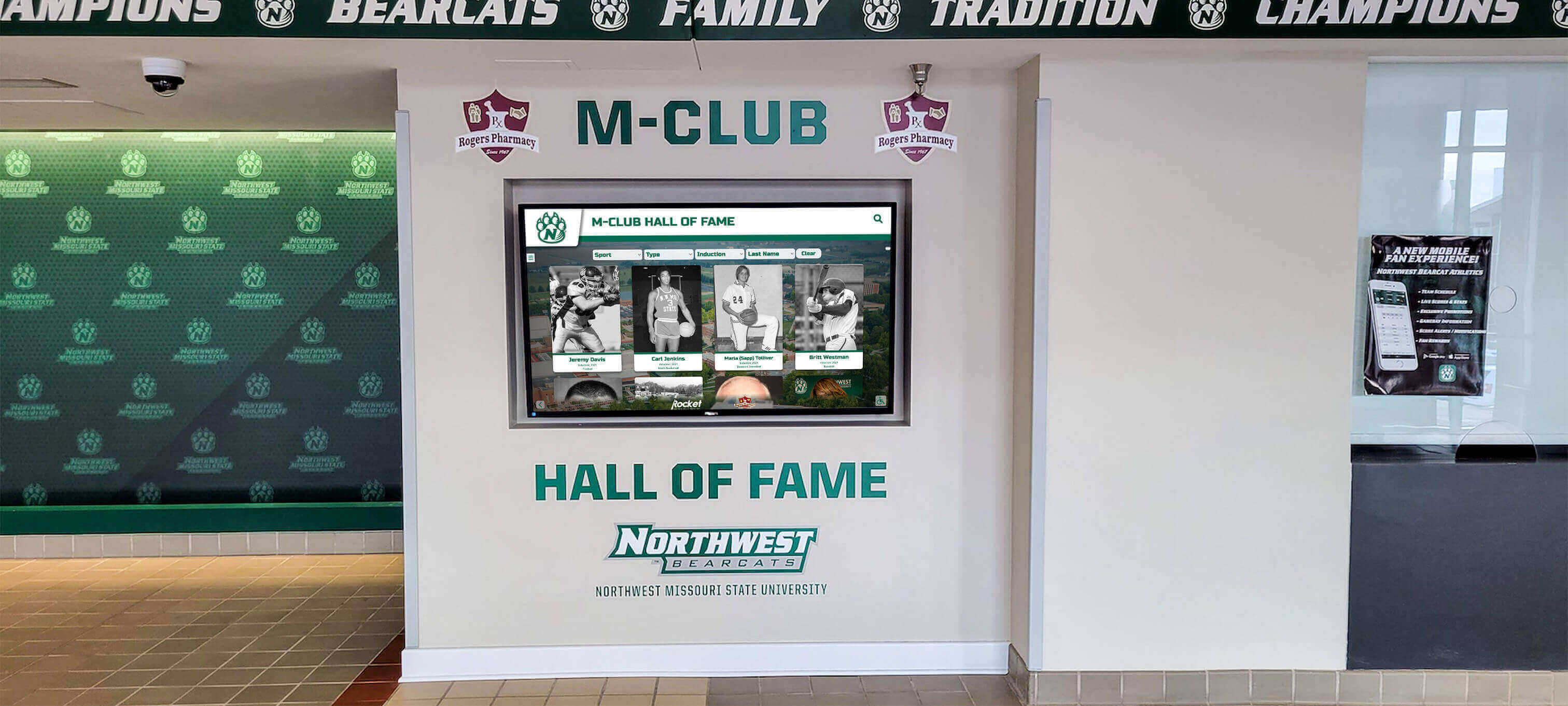
Investment Realities:
- Initial Development: $75,000-$300,000+ depending on scope and complexity
- Timeline: 12-24 months from requirements gathering through launch
- Ongoing Maintenance: $15,000-$60,000+ annually for updates, security, hosting, and technical support
- Dedicated Resources: Requires project management, oversight, and coordination throughout development
Strategic Consideration:
Before committing to custom development, thoroughly evaluate whether specialized platforms like Rocket Alumni Solutions can meet 90%+ of requirements. Most schools discover that purpose-built recognition software provides necessary functionality at 20-30% of custom development cost while delivering solutions in weeks rather than years.
Custom development makes sense for truly exceptional situations but represents overkill for typical school recognition programs regardless of size.
8. ScreenCloud – Best Multi-Campus Digital Signage with Recognition
Best For: School districts managing digital signage across multiple campuses seeking to incorporate recognition content in broader communications strategy
ScreenCloud provides cloud-based digital signage management that districts can use for various purposes including recognition content rotation.
Key Strengths:
- Multi-Location Management: Control displays across entire districts from centralized cloud platform
- Content Scheduling: Rotate recognition content with announcements, emergency alerts, and promotional materials
- Template Options: Pre-built designs for various content types including achievement highlights
- Third-Party Integrations: Connect with Google Slides, social media, weather, news, and other data sources
- Affordable Scaling: Per-screen pricing that scales reasonably across multiple locations
Recognition-Specific Limitations:
- No Database Functionality: Designed for rotating content, not comprehensive searchable archives
- Limited Interactivity: Basic touchscreen support without sophisticated hall of fame exploration features
- Shallow Content: Slideshow format constrains detailed biographical storytelling
- Generic Recognition Templates: Not specifically optimized for athletic or academic hall of fame requirements
- No Advanced Analytics: Limited insights about recognition content engagement versus other signage
Pricing:
Subscription-based starting around $20 per screen monthly, with enterprise discounts for larger deployments.
Best Use Case:
Districts already using ScreenCloud for campus-wide digital signage who want to incorporate recognition highlights alongside other communications. Works well for rotating athletic achievements and championship celebrations but less effectively for comprehensive, interactive halls of fame.
For districts prioritizing recognition programs, implementing Rocket Alumni Solutions for dedicated hall of fame purposes while using ScreenCloud for general signage delivers optimal results for each use case.
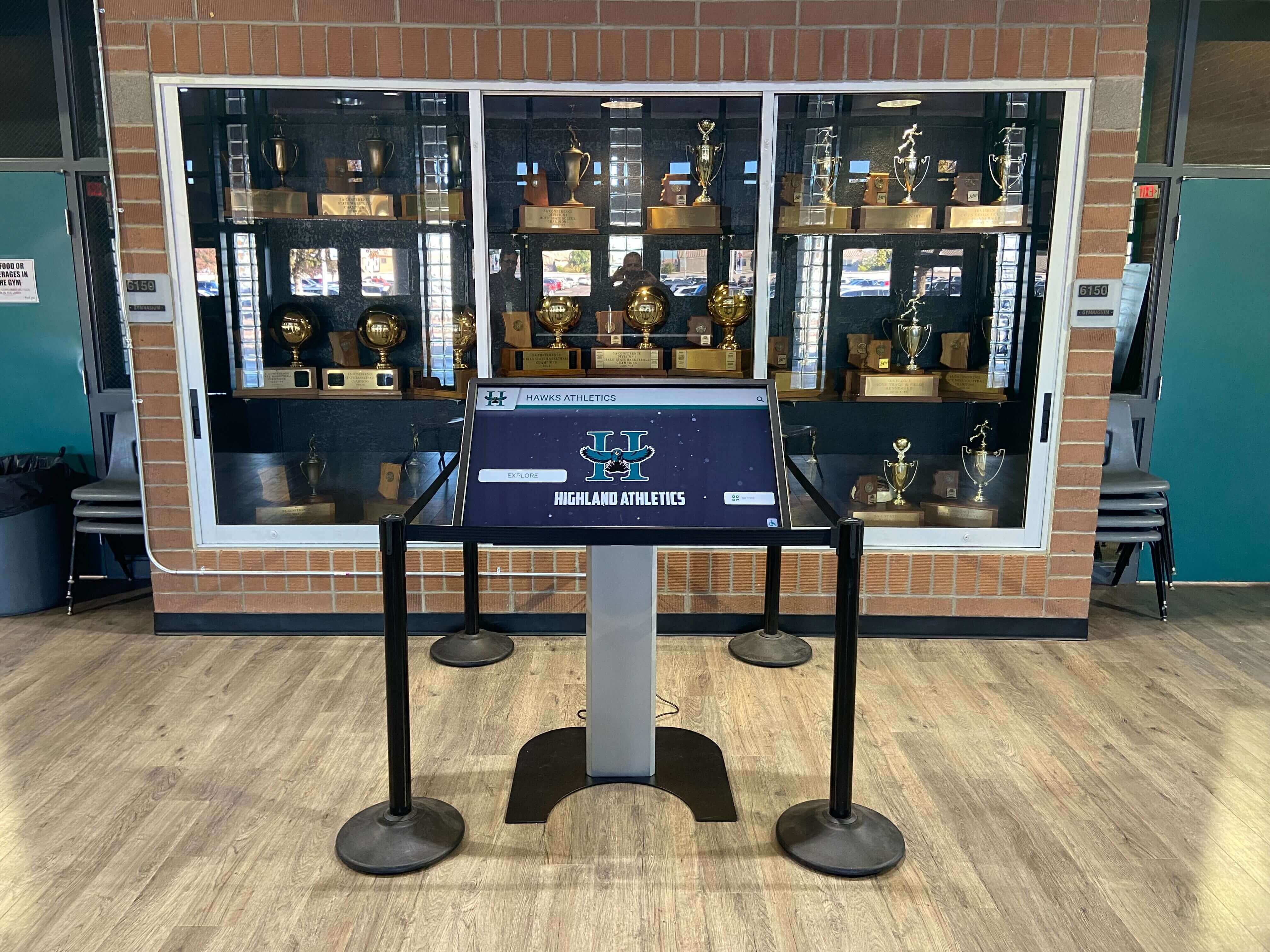
Comparison Matrix: Feature-by-Feature Analysis
| Feature | Rocket Alumni | Rise Vision | WordPress | Gipper | Canva | Google Sites | Custom Dev | ScreenCloud |
|---|---|---|---|---|---|---|---|---|
| Touchscreen Optimized | ✅ Excellent | ⚠️ Limited | ⚠️ Varies | ❌ No | ❌ No | ❌ No | ✅ Can Build | ⚠️ Basic |
| Searchable Database | ✅ Advanced | ❌ No | ⚠️ Custom | ❌ No | ❌ No | ❌ No | ✅ Can Build | ❌ No |
| Easy Content Management | ✅ Intuitive | ✅ Good | ⚠️ Varies | ✅ Good | ✅ Good | ⚠️ Basic | ⚠️ Custom | ✅ Good |
| Recognition-Specific | ✅ Purpose-Built | ❌ Generic | ❌ Generic | ⚠️ Graphics Only | ❌ Generic | ❌ Generic | ✅ Can Build | ❌ Generic |
| Web + Physical Display | ✅ Both | ✅ Display Focus | ✅ Can Build | ❌ Graphics Only | ❌ Limited | ✅ Web Only | ✅ Can Build | ✅ Display Focus |
| Multimedia Support | ✅ Extensive | ⚠️ Limited | ✅ Plugin-Based | ⚠️ Static Images | ⚠️ Limited | ⚠️ Basic | ✅ Can Build | ⚠️ Limited |
| Setup Time | 2-4 weeks | 1-2 weeks | 3-6 months | 1 week | Immediate | Immediate | 12-24 months | 1-2 weeks |
| Technical Expertise | ✅ Minimal | ✅ Minimal | ❌ High | ✅ Minimal | ✅ Minimal | ✅ Minimal | ❌ Very High | ✅ Minimal |
| Cost (Annual) | $$$$ | $$ | $$$-$$$$ | $$-$$$ | $ | Free | $$$$$ | $$ |
| Support Quality | ✅ Dedicated | ✅ Available | ⚠️ Community | ✅ Available | ⚠️ Limited | ⚠️ Forums | ⚠️ Varies | ✅ Available |
| Ideal For | Comprehensive Recognition | Multi-Purpose Signage | Customization Control | Graphics Creation | Basic Projects | Free Solution | Unique Enterprise | District Signage |
Implementation Considerations for Schools
Regardless of which platform you choose, successful digital hall of fame implementation requires thoughtful planning:
Content Strategy Development
Define Recognition Categories: Determine what types of achievements your school will celebrate—athletic records, championship teams, academic excellence, artistic achievement, service contributions, and alumni accomplishments.
Establish Selection Criteria: Create clear guidelines for who receives recognition in each category, ensuring fairness, consistency, and appropriate standards.
Plan Multimedia Content: Decide what information each profile should include—photos, videos, statistics, biographical narratives, career updates—and establish quality standards.
Organize Historical Records: Gather existing achievements from trophy engravings, old programs, yearbooks, newspaper clippings, and institutional archives requiring digitization.
Learn more about content planning strategies for effective digital recognition.
Hardware Decisions for Physical Displays
Display Sizing: Choose appropriate screen sizes based on viewing distance and available space, typically ranging from 43" for intimate settings to 75"+ for large lobbies.
Installation Locations: Select high-traffic areas where displays will engage maximum audiences—athletic facility lobbies, main entrances, hallways near trophy cases, alumni centers.
Mounting Options: Decide between wall-mounted installations, freestanding kiosks, or custom integrated designs based on space and aesthetics.
Network Infrastructure: Ensure reliable ethernet connectivity for consistent performance, with WiFi as backup for locations where wired connections prove impractical.
Commercial-Grade Equipment: Invest in displays rated for 16-24 hour daily operation rather than consumer televisions not designed for continuous public use.
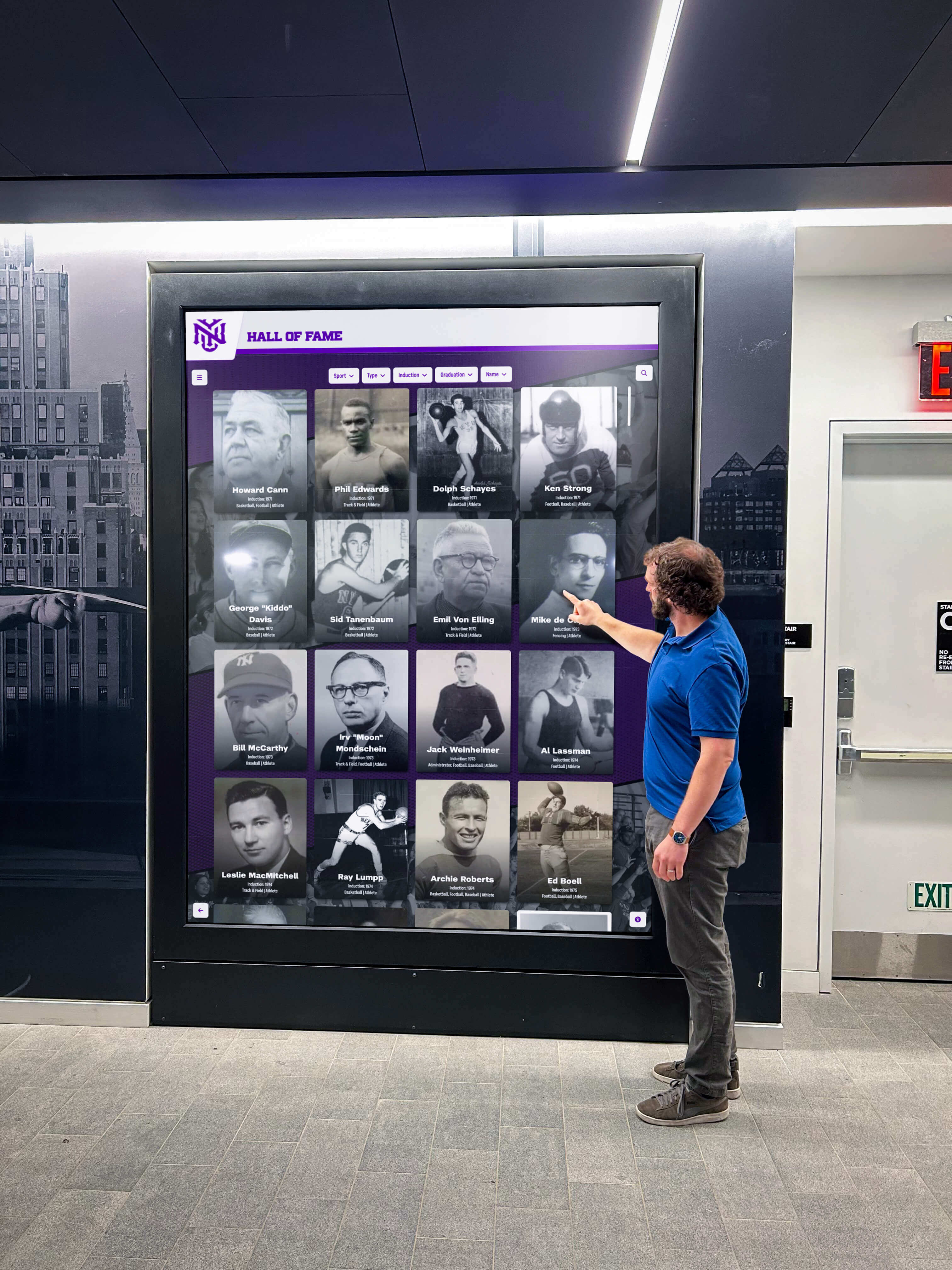
Staffing and Training
Assign Ownership: Designate specific staff members responsible for content management, updates, and system oversight.
Provide Comprehensive Training: Ensure all content managers understand platform capabilities and feel confident making updates independently.
Establish Approval Workflows: Create processes ensuring content accuracy, appropriate tone, and consistency before publication.
Plan for Succession: Document procedures and train multiple staff members to prevent single points of failure when personnel change.
Launch and Promotion Strategy
Soft Launch Testing: Begin with limited content and small audience to identify issues before major public announcement.
Grand Opening Event: Unveil the system with ceremony celebrating recognized honorees and demonstrating capabilities.
Multi-Channel Promotion: Announce through email, social media, school newsletters, local media, and website features.
Ongoing Engagement: Regularly highlight featured content, announce new additions, and remind community about the recognition resource.
Explore strategies for successful recognition display launches that maximize community engagement.
Making Your Platform Decision: Selection Framework
Choose Rocket Alumni Solutions When:
- Seeking comprehensive, purpose-built recognition platform
- Wanting both physical displays and web accessibility from unified system
- Prioritizing ease of use and minimal ongoing technical requirements
- Valuing dedicated support throughout implementation and operation
- Recognition represents strategic priority deserving professional solution
- Budget allows for proper investment in long-term recognition infrastructure
Choose Rise Vision or ScreenCloud When:
- Already using these platforms for campus-wide digital signage
- Recognition content will share displays with other communications
- Slideshow format suffices for achievement highlights
- Comprehensive database and search functionality not required
- Mainly need rotating championship celebrations and athlete spotlights
Choose WordPress When:
- Have dedicated web development resources available
- Need deep integration with complex existing systems
- Require complete customization control justifying development investment
- Can commit to ongoing technical maintenance and updates
- Only need web-based recognition without physical displays
Avoid Generic Tools (Canva, Google Sites) Unless:
- Absolutely zero budget exists for recognition software
- Need only temporary solution until proper investment approved
- Recognition requirements limited to simple honor roll lists
- Understand significant limitations and plan future migration
Budgeting for Digital Hall of Fame Software
Understanding total cost of ownership helps set realistic expectations and secure appropriate funding:
Rocket Alumni Solutions (Purpose-Built Platform)
- Initial Investment: $10,000-$35,000 including software, optional physical displays, implementation, content migration, and training
- Annual Ongoing: $2,000-$6,000 for software access, updates, support, and maintenance
- Value Delivered: Comprehensive solution with minimal ongoing effort required
WordPress Custom Development
- Initial Development: $15,000-$60,000 for custom theme, plugins, and implementation
- Annual Ongoing: $4,000-$12,000 for hosting, security, maintenance, and updates
- Value Consideration: Higher cost than specialized platforms with added maintenance burden
Digital Signage Platforms (Rise Vision, ScreenCloud)
- Annual Subscription: $200-$500 per screen for basic recognition content rotation
- Value Limitation: Works for supplementary use but lacks comprehensive hall of fame capabilities
Custom Enterprise Development
- Major Investment: $75,000-$300,000+ for sophisticated custom applications
- Annual Ongoing: $15,000-$60,000+ for maintenance, hosting, and support
- Appropriate Only When: Truly unique requirements justify premium investment
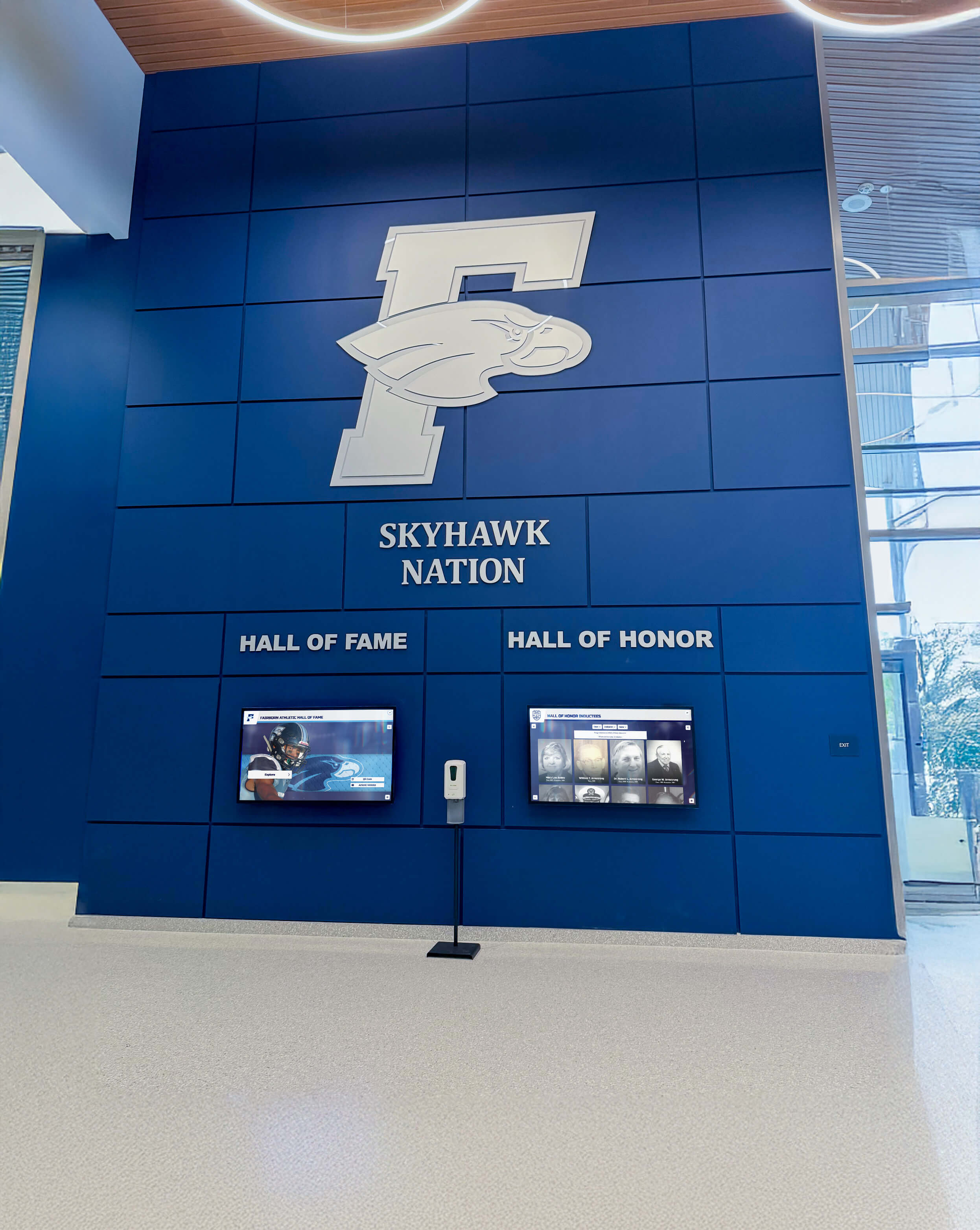
Common Mistakes to Avoid When Selecting School Hall of Fame Software
Prioritizing Price Over Capability: Choosing the cheapest option often leads to systems that frustrate users, limit recognition program growth, and require expensive replacement within 2-3 years. Proper initial investment in capable platforms proves more cost-effective long-term.
Underestimating Content Development: Many schools purchase software without realizing that creating comprehensive profiles for hundreds of honorees requires substantial time investment. Budget for content migration services or dedicated staff time.
Ignoring Staff Technical Capabilities: Select platforms matching your staff’s technical skills. Sophisticated platforms requiring constant IT support create ongoing burdens, while intuitive systems enable independent content management.
Overlooking Touchscreen Optimization: Generic website platforms work on desktop computers but fail when deployed on touchscreen kiosks. Ensure any platform claiming touchscreen support was actually designed for that purpose.
Neglecting Long-Term Scalability: Recognition programs grow over time. Systems working well for 50 profiles often fail at 500 profiles. Choose platforms designed to scale with expanding recognition.
Skipping Reference Checks: Always speak with schools currently using platforms you’re considering. Their real-world experiences reveal insights that sales demonstrations never show.
Avoid pitfalls by learning from common implementation mistakes schools have made.
Future Trends Shaping School Hall of Fame Software
As technology evolves, expect digital recognition platforms to incorporate emerging capabilities:
Artificial Intelligence Integration: AI will assist with content creation, automated achievement tracking, intelligent search recommendations, and personalized visitor experiences highlighting connections to specific athletes or achievements.
Enhanced Mobile Connectivity: Deeper integration between physical displays and companion mobile apps will enable visitors to save favorites, share discoveries, and continue exploration beyond physical locations.
Advanced Analytics: Sophisticated engagement tracking will reveal which content resonates, inform recognition strategy, and demonstrate measurable program impact for justifying investments.
Social Media Integration: Seamless sharing capabilities will amplify recognition reach, enabling athletes and families to share achievements across networks while maintaining professional presentation.
Virtual Reality Experiences: VR capabilities may enable remote virtual visits to recognition displays, particularly valuable for distant alumni and prospective students.
Blockchain Verification: Emerging verification technologies may provide tamper-proof authentication of achievements and credentials, adding credibility to recognized accomplishments.
Stay informed about future digital recognition trends as technology continues advancing.
Conclusion: Selecting the Best Digital Hall of Fame Software for Your School
The right digital hall of fame software transforms how your school celebrates excellence, engages community, and honors the achievements that define your institution’s character. While numerous options exist, platforms specifically designed for educational recognition deliver dramatically superior results compared to adapted generic tools.
For most schools, Rocket Alumni Solutions represents the optimal choice, combining purpose-built recognition technology with comprehensive support, proven reliability, and the flexibility to serve diverse institutional needs from small private schools to major university athletic programs. The platform’s specialized focus on educational recognition addresses requirements that generic platforms simply cannot meet efficiently.
Schools with dedicated IT resources and complex integration needs might explore WordPress development, though most discover that specialized platforms provide 90% of desired functionality at a fraction of the cost. Digital signage platforms work well for supplementary recognition content but lack the database and interactivity features comprehensive halls of fame require.
The investment you make in digital recognition software will serve your institution for years, celebrating achievements, inspiring current students, and strengthening connections with alumni and community. Choose platforms that honor these accomplishments with the quality and professionalism they deserve.
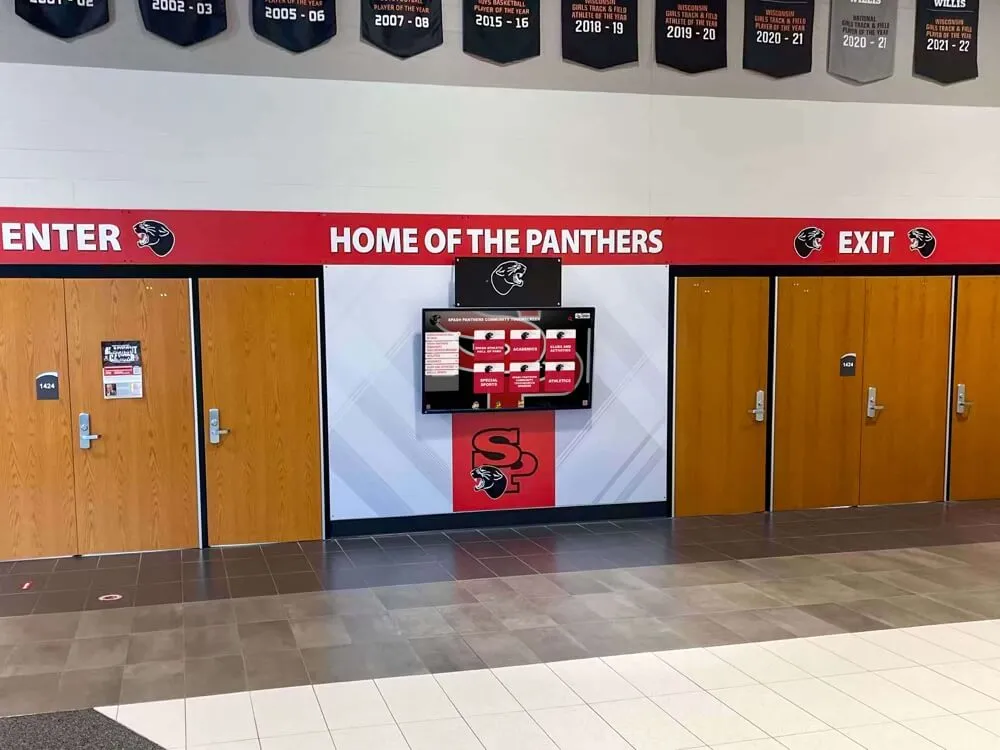
Ready to transform your school’s recognition program? Explore how Rocket Alumni Solutions delivers comprehensive digital hall of fame platforms designed specifically for educational institutions. Discover more about athletic recognition strategies, learn how interactive displays enhance school pride, or explore college commitment recognition approaches that celebrate student achievements.
Your school’s greatest achievements deserve recognition technology specifically designed to celebrate excellence. Choose platforms that match the quality of the accomplishments they honor.
Disclaimer: This comparison is based on publicly available information as of October 2025. All product names and trademarks belong to their respective owners. Comparative statements reflect Rocket Alumni Solutions’ interpretation of available data and may change over time. This content was produced by or on behalf of Rocket Alumni Solutions. All trademarks are property of their respective owners. Rocket Alumni Solutions is not affiliated with or endorsed by Rise Vision, Gipper, Canva, ScreenCloud, WordPress, or Google.
